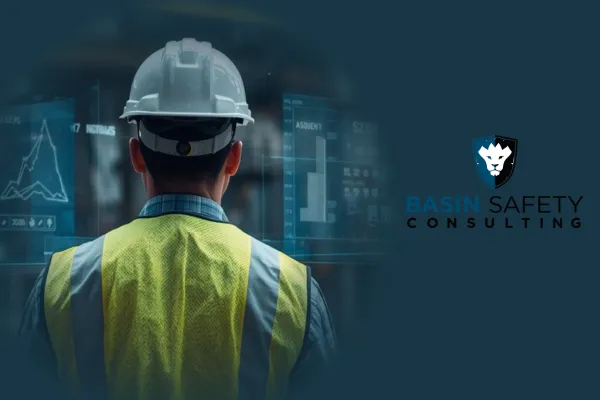
Wearable Tech Trends: From Vests to Smart Helmets in 2025
Technology is no longer confined to our pockets it’s woven into what we wear. In 2025, wearable technology is evolving faster than ever, moving beyond fitness trackers and smartwatches to include smart vests, intelligent helmets, and connected safety gear.
Wearable Tech Trends: From Vests to Smart Helmets in 2025 explores how these innovations are reshaping industries like construction, manufacturing, logistics, and emergency response. These tools not only boost performance but also save lives merging safety with cutting-edge connectivity.
Let’s dive into the most exciting advancements driving the next generation of wearable technology.
What Is Wearable Technology?
Wearable technology refers to smart electronic devices designed to be worn on the body often embedded in clothing, accessories, or equipment.
In 2025, this category has expanded well beyond consumer fitness wearables. Today’s industrial-grade wearables are integrated with:
AI-driven sensors for fatigue and health monitoring
Augmented reality (AR) for training and maintenance
Smart communication tools for remote collaboration
Real-time tracking systems for safety and efficiency
The result? A workforce that’s safer, smarter, and more connected than ever before.
Top Benefits of Modern Wearable Tech
1. Enhanced Worker Safety
Wearable tech like smart helmets and sensor-equipped vests can detect hazards such as heat stress, fatigue, or exposure to dangerous gases and alert both the worker and supervisors instantly.
2. Real-Time Health Monitoring
Advanced biometrics track heart rate, temperature, hydration, and stress levels, helping teams identify potential health issues before they become emergencies.
3. Increased Productivity
By providing real-time data and hands-free communication, wearable tech helps workers focus on tasks, reduce downtime, and optimize workflow efficiency.
4. Data-Driven Insights
The collected data enables employers to improve safety policies, refine training programs, and predict maintenance needs through predictive analytics.
5. Improved Compliance
Smart gear automatically records safety metrics, helping organizations stay compliant with OSHA, ISO, and other industry safety standards.
How to Integrate Wearable Tech into the Workplace
Step 1: Identify Needs and Objectives
Start by assessing the challenges your teams face fatigue, communication gaps, or hazard awareness and choose technology that directly addresses those pain points.
Step 2: Choose the Right Devices
Popular wearable solutions in 2025 include:
Smart Safety Vests: Track location, detect falls, and monitor vital signs.
Smart Helmets: Feature AR overlays for field instructions, integrated cameras, and fatigue sensors.
Smart Glasses: Display real-time data and instructions hands-free.
Exoskeletons: Reduce strain during heavy lifting tasks.
Step 3: Train Your Teams
Provide user-friendly training on device usage, maintenance, and data privacy. A well-informed workforce is key to maximizing ROI on wearable tech investments.
Step 4: Integrate with Existing Systems
Connect wearables with your EHS (Environment, Health & Safety) or IoT platforms to streamline data collection and real-time analytics.
Step 5: Monitor and Improve
Continuously review performance metrics to identify areas for improvement and ensure your technology continues to deliver measurable results.
Tips, Examples, and Case Studies
Tip: Always pilot new wearable tech before company-wide deployment to identify compatibility or user issues.
Tip: Combine wearables with predictive analytics to prevent fatigue-related accidents.
Example: A construction firm in 2025 adopted AI-powered smart helmets to monitor site temperatures and worker alertness, resulting in a 30% reduction in heat-related incidents.
Case Study: A logistics company equipped drivers with smart vests that tracked posture and fatigue. The result? A 22% drop in workplace injuries within six months.
The future of safety and productivity lies in wearable technology. From connected vests to AI-enhanced helmets, these innovations empower workers, protect lives, and streamline operations.
As Wearable Tech Trends: From Vests to Smart Helmets in 2025 continues to evolve, one thing is clear — the integration of smart wearables will redefine how industries operate, making safety and efficiency inseparable.
Ready to modernize your safety program? Start exploring wearable tech solutions that fit your workforce today.
Frequently Asked Questions (FAQ)
1. What industries benefit most from wearable tech?
Construction, manufacturing, logistics, mining, and healthcare see the greatest safety and productivity gains from wearable devices.
2. Are smart helmets really effective?
Yes — smart helmets monitor fatigue, detect collisions, and use sensors to alert workers of potential hazards in real time.
3. How much does wearable safety tech cost?
Prices vary from $100 for basic devices to over $1,000 for advanced AI-powered gear. Costs are offset by reduced incidents and downtime.
4. Is employee data kept private?
Most modern devices feature encrypted systems and comply with data protection regulations like GDPR.
5. What’s next for wearable tech beyond 2025?
Expect more AI integration, machine learning for predictive safety, and augmented reality interfaces that revolutionize workplace efficiency.
